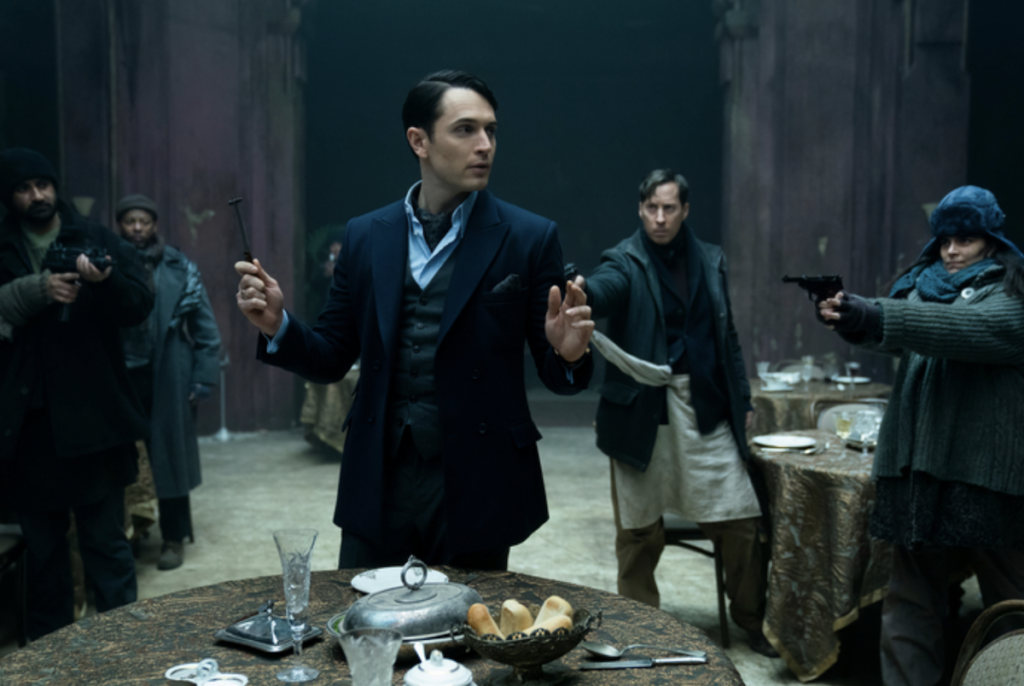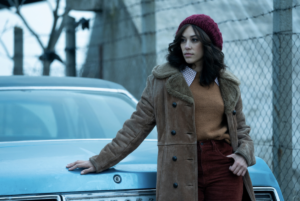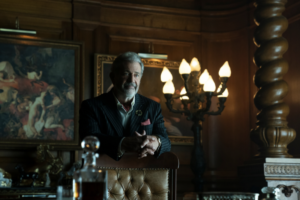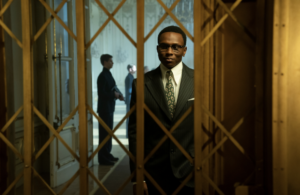
After more than 35 years of operation, TBI is closing its doors and our website will no longer be updated daily. Thank you for all of your support.
Script to Screen – The Continental: From The World Of John Wick
With The Continental launching on Peacock and Prime Video tomorrow, Mark Layton talks assassin hotels, contortion choreography and 1970s trash cans with John Wick franchise execs Erica Lee and Basil Iwanyk, and asks – where’s Keanu Reeves?
American action thriller franchise John Wick is making the jump from cinema to streaming tomorrow, with The Continental arriving as a small-screen expansion to the popular movie series, debuting on Peacock in the US and Prime Video internationally.
But this time, there’s no Keanu Reeves in sight, nor should you expect to see the titular hitman that has punched, kicked, stabbed and shot his way across four movies to date. Instead, the three-part series transports the assassin action back to 1970s New York, to follow Winston Scott, played here by Colin Woodell as a younger version of Ian McShane’s character from the movies.
Winston has escaped the violence of his youth but is dragged (quite literally) back to the city when his brother steals something of immense value from crime boss Cormac (Mel Gibson) – the current manager of the New York branch of The Continental hotel – a refuge for assassins, which is a location central to the film series. As the situation quickly escalates, Winston is pitted against Cormac and the hotel’s lethal guests and placed on the path to taking control of The Continental himself.
Act one: Deepening the mythology
Erica Lee has served as a producer on all four John Wick movies, as well as on feature films such as Sicario and The Informer via her role as partner at Thunder Road Pictures, which also produces The Continental alongside Lionsgate Television and Coolidge Ward Entertainment.
Serving as an executive producer on the series, she tells TBI: “We had been developing a show basically ever since John Wick: Chapter Two” in an effort to expand the franchise. “We originally developed a show that was set in the present day, like The Continental in Los Angeles,” she reveals.
However, that posed problems as a show contemporaneous with the movies would be “stepping on our timeline” and fans of the series would likely be distracted by the absence of Keanu Reeves and the John Wick character. Scrapping that idea, Thunder Road recruited new showrunners in Kirk Ward and Greg Coolidge, who suggested a different approach.
“Kirk Ward and his team came in and said, what if we did it in the 70s? He remembered this line that Winston uses in in the earlier movies where he says he’s been running part of this establishment for 35 years. He’s like, that’s it; that’s the way in – and we loved that idea. I thought it was a really kind of clean way in that gave us a lot of runway to introduce new characters and to deepen the mythology.”
While the obvious approach for a prequel might have been to re-cast John Wick himself with a younger actor to fill in some of the character’s past, that option was never on the table.
“Keanu is Keanu and that’s sacrosanct. We never thought about a prequel with the young John,” says Basil Iwanyk, Thunder Road founder, who, like Lee, is an EP on the series and has worked across the film franchise, as well as a producer on features such as Greenland, The Contractor and Hotel Mumbai.
Act two: Going big and going hard
One thing that the show creators were determined to bring back from the film series, however, was its impressive fight choreography and sense of scale.
That scope is down to director Albert Hughes, says Iwanyk: “Albert looked at the series as one giant movie. Let’s envision ourselves having this opening in like an IMAX screen and make it look big and feel big.
“So we went in there with the idea of size and scope of texture and it feeling grand and epic. We don’t have Keanu Reeves, so how do you do a John Wick show without John Wick? We had a high bar to reach – we better be cooler and more interesting and edgier and go for it in terms of size and scope and music. Because we wanted people to realise okay, we’re not cheapening out without Keanu, we’re going big and we’re going hard.”
Part of that size and scope is in the show’s recreation of 1970s New York, though not necessarily in how the city really looked, but how cinemagoers remember it from the movies of the era.
“We didn’t want to pick the 70s as it really existed in New York; we wanted to pick the 70s that survives in our imagination from the films – the Sidney Lumet films, the William Friedkin films; you know, Fort Apache, The Bronx, and all those great gritty, New York-based films,” says Iwanyk, while Lee adds “with a John Wick spin.”
“That was always kind of our North Star,” he adds: “We have two gigantic characters in the movie, really, we had The Continental, and New York in the 70s. Those are kind of the two movie stars that we started with before we went to casting.”
Act three: Kicking ass
Despite the importance of New York as a ‘character’ in the series, it was actually shot in Budapest, Hungary, which presented more than a few challenges, with the production filming during covid and with the conflict in Ukraine taking place in the country next door.
When it comes to recreating a specific decade “usually everyone pays attention to the buildings and the broad stroke stuff, but the key is in the details – it’s the garbage can, the hairbrush, the radio, the licence plates, the hubcaps, what people are wearing,” says Iwanyk.
“One thing that that our set dresser did, all the trash feels right. Everything around it feels like it came from New York, and we didn’t shoot in the United States, we had to ship a lot of stuff in or find it in Central Europe – it wasn’t easy.”
Meanwhile, with the Russian invasion taking place nearby and concerns that Budapest might come under attack “we had calls about how to evacuate if we had to – and everyone really, to their credit, did an amazing job and played it cool and stuck through really hard times,” says Lee.
With the series finally about to go in front of viewers – and long-time John Wick fans – Lee says she is most proud of how “there’s so many strong kick ass women,” in The Continental. “We talked a lot about how the women would fight in this,” she explains, with one rooftop confrontation involving Ukrainian actor and real-life contortionist Marina Mazepa as sinister assassin Gretel standing out in particular for Lee.
Iwanyk too, is proud of the show’s staging and choreography, pointing to a tracking shot at the New Year’s Eve party at the start of the show’s first episode, which leads into a dynamic fight sequence.
“I would put that up against any 15 minutes of television action of anything that’s ever been done,” says the exec. “I just think it’s so cool, and edgy and sexy, and different.”






